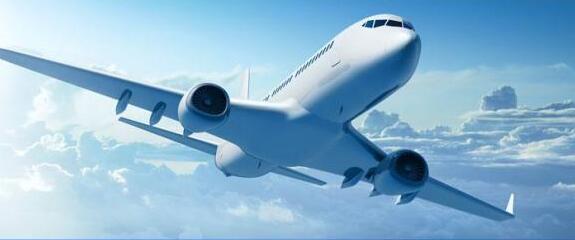There are three distinct and radically different forms of flyingmachines. These areAeroplanes, helicopters and omithopersOf these the aeroplane takes precedence and is used almost exclusivelyby successful aviators, the helicopters and omithopers having been triedand found lacking in some vital features. while at the same time in somrespects the helicopter has advantages not found in the aeroplarWhat the Helicopter IsThe helicopter gets its name from being fitted with vertical propellersor helices(see illustration) by the action of which the machine is raiseddirectly from the ground into the air. This does away with the necessity forgetting the machine under a gliding headway before it floats, as is the casith the aeroplane, and consequently the helicopter can be handled in amuch smaller space than is required for an aeroplane. This, in manystances, is an important advantage, but it is the only one the helicopterpossesses, and is more than overcome by its drawbacks. The most serousof these is that the helicopter is deficient in sustaining capacity,requres too much motive poweForm of the OrnithopterThe ornithopter has hinged planes which work like the wings of a bird.At first thought this would seem to be the correct principle, and most ofthe early experimenters conducted their operations on this line. It is nowgenerally understood, however, that the bird in soaring is in reality anaeroplane, its extended wings serving to sustain, as well as propel, thebody. At any rate the omithoper has not been successful in aviation, andhas been interesting mainly as an ingenious toy. Attempts to construct it ona scale that would permit of its use by man in actual aerial flights havebeen far from encouraging

There are three forms of aeroplanes, with all of which more or lessuccess has been attained. These areThe monoplane, a one-surfaced plane, like that used by Bleriot.The biplane, a two-surfaced plane, now used by the Wrights, Curtissarman, and othersThe triplane, a three-surfaced plane This form is but little used, its onlyprominent advocate at present being Elle Latimer, a Danish experimenter,who has not thus far accomplished muchWhatever of real success has been accomplished in aviation may becredited to the monoplane and biplane, with the balance in favor of thelatter. The monoplane is the more simple in construction and, whereweight- sustaining capacity is not a prime requisite, may probably befound the most convenient. This opinion is based on the fact that themaller the surface of the plane the less will be the resistance offered tothe air, and the greater will be the speed at which the machine may bemoved. On the other hand, the biplane has a much greater plane surface(double that of a monoplane of the same size) and consequently muchgreater weight carrying capacityDifferences in BiplanesWhile all biplanes are of the same general construction so far as themain planes are concemed, each aviator has his own ideas as to theriggingWright, for instance, places a double horizontal rudder in front, with avertical rudder in the rear. There are no partitions between the main planes,and the bicycle wheels used on other forms are replaced by skidsVoisin, on the contrary, divides the main planes with vertical partitionsto increase stability in turning: uses a single-plane horizontal rudder infront, and a big box tail with vertical rudder at the rear, also the bicyclewheelsCurtiss attaches horizontal stabilizing surfaces to the upper plane; hasa double horizontal rudder in front, with a vertical rudder and horizontalstabilizing surfaces in rear. Also the bicycle wheel alighting gear
First decide upon the kind of a machine you want- monoplanebiplane, or triplane. For a novice the biplane will, as a rule, be found themost satisfactory as it is more compact and therefore the more easilyhandled. This will be easily understood when we realize that the surface ofa flying machine should be laid out in proportion to the amount of weightit will have to sustain. The generally accepted rule is that 152 square feetof surface will sustain the weight of an average-sizeday 170 poundsNow it follows that if these 152 square feet of surface are used n oneplane, as in the monoplane, the length and width of this plane must begreater than if the same amount of surface is secured by using two planes-the biplane. This results in the biplane being more compact and thereforemore readily manipulated than the monoplane, which is an important itemfor a noviceGlider the Basis of SuccessFIving machines without motors are called gliders. In making a fvingmachine you first construct the glider. If you use it in this form it remainsa glider. If you install a motor it becomes a flying machine. You must havea good glider as the basis of a successful fly ing machineIt will be well for the novice the man who has never had anyexperience as an aviator, to begin with a glider and master its constructionand operation before he essays the more pretentious task of handling afully-equipped flying machine. In fact, it is essential that he should do soPlans for Handy GliderA glider with a spread (advancing edge) of 20 feet, and a breadth ordepth of 4 feet, will be about right to begin with. Two planes of this sizewill give the 152 square yards of surface necessary to sustain a man'sweight. Remember that in referring to flying machine measurementsspread takes the place of what would ordinarily be called "length,andinvariably applies to the long or advancing edge of the machine which cutimto the air. Thus, a glider is spoken of as being 20 feet spread, and 4 feetim depth. So far as mastering the control of the machine is concemedleaming to balance one's self in the air guiding the machine in any desireddirection by changing the position of the body, etc- all this may be leamedjust as readily and perhaps more so, with a 20- foot glider than with alarger apparatus
